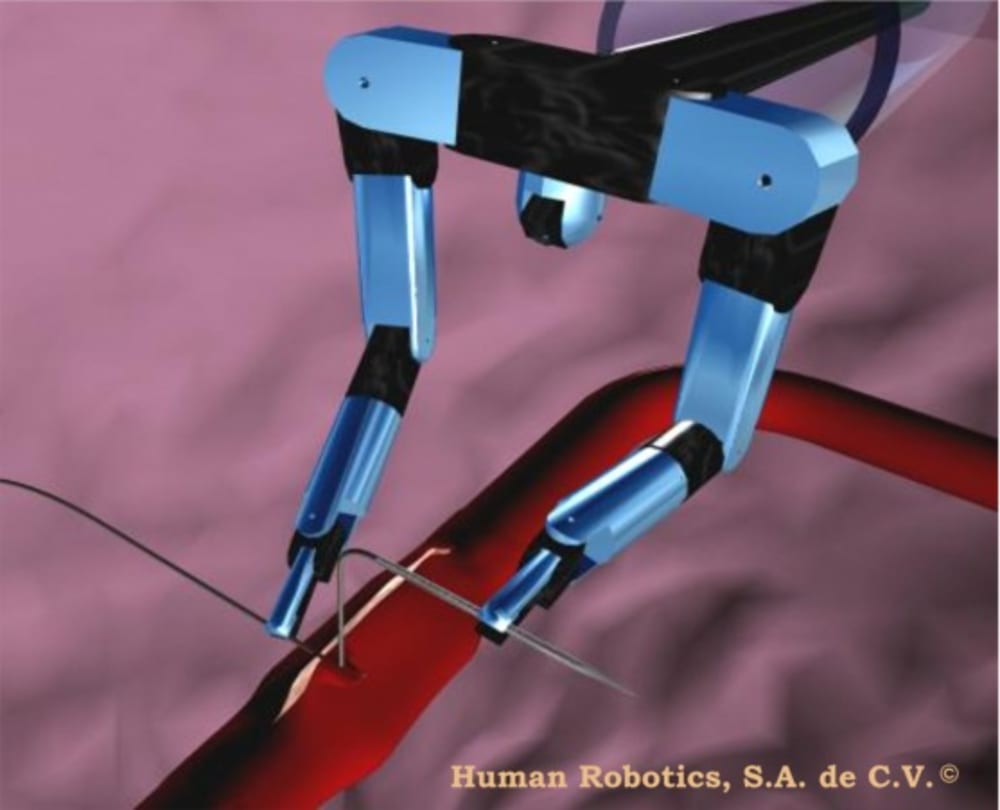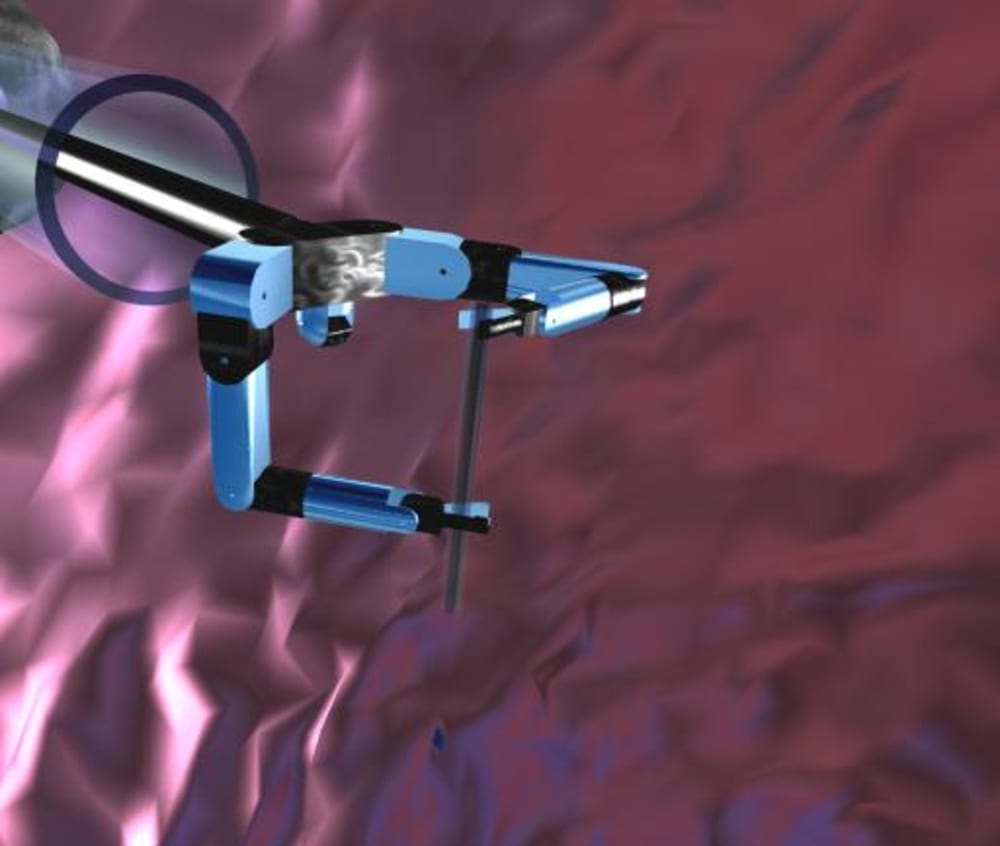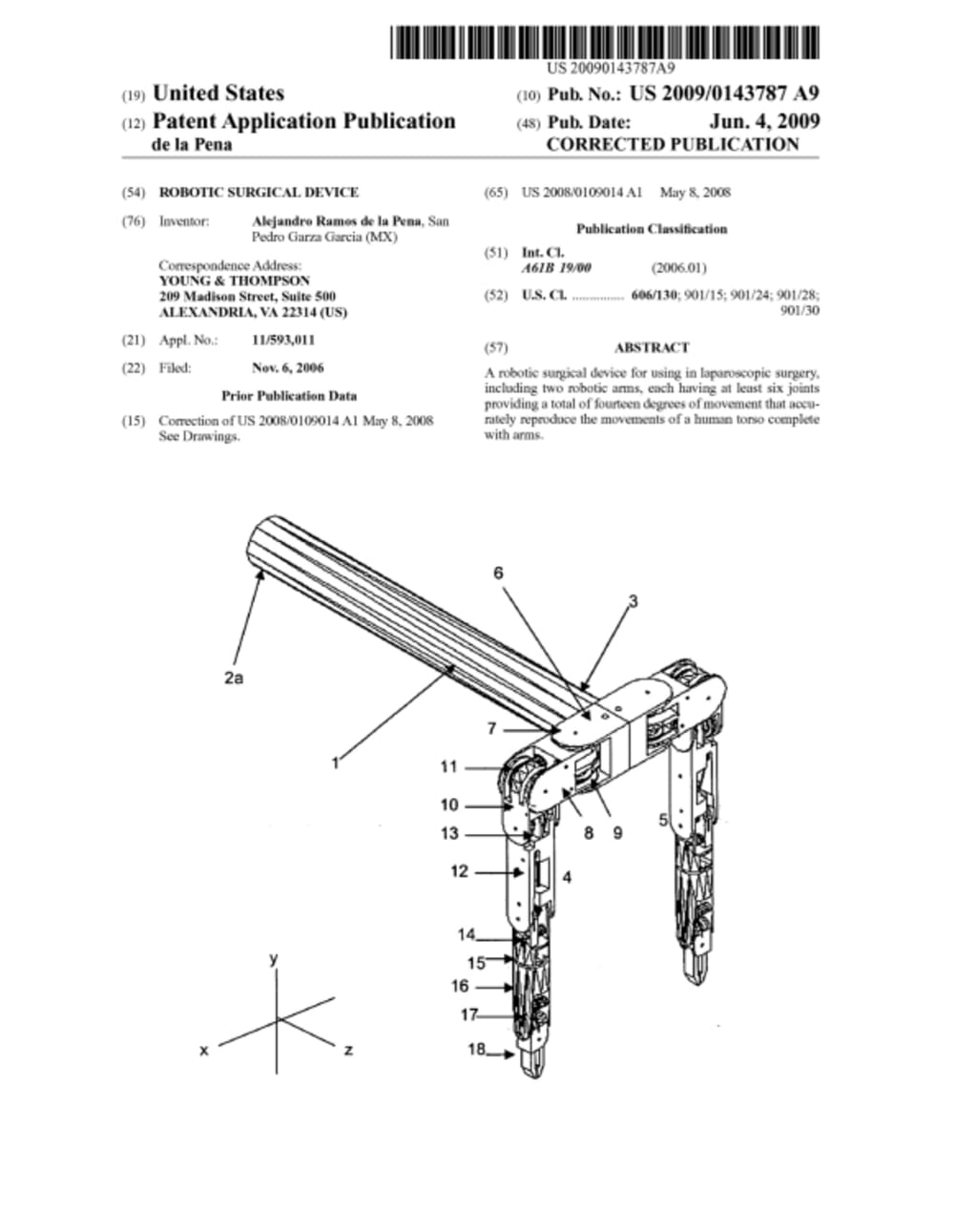Human Robotics is a small high tech company dedicated to Research & Development of new anthropomorphic robotic technologies for being applied on minimally invasive robotic surgery.
The company has developed a miniature anthropomorphic robotic torso which includes 2 arms, trunk and a miniature camera. Each arm has 7 Degrees of freedom. The invention has been entitled Robotic Surgical Device.
The Robotic Surgical Device is capable to perform thoracic or abdominal Minimally Invasive Robotic Surgery.
Competitive Advantages of the Device:
• Robotic Surgical Device (RSD) has 14 Degrees of Freedom (DOF), other devices only have 3 or 4 DOF.
• RSD simulate upper limb surgeon’s movements.
• Direct correlation between surgeon’s articulations and RSD joints.
• Easier for the surgeon to control, since it can be maneuvered using the same movements learned during the standard training, lowering surgeon’s training time and costs.
• Tissue cutting or suture procedures need at least two robotic arms, RSD only need one incision in patient’s body to accomplish this procedure.
• RSD’s Hand can be modified to allow diverse instruments.
• Via a complex system of cable and pulleys the servomotor’s movement is transmitted with precision and very low friction to the RSD joints.
• Unique access method: RSD’s extremities put together on a parallel position in front of the trunk, pointing directly to the access via lumen, so only need one incision in order to introduce two arms trough a 2.5 cm incision.
• Diversification: due to the RSD’s unique manipulation capabilities the system could be applied on eye surgery, hand and feet microsurgery, neurosurgery, etc.
Alternative Application Sectors:
• Military and Police Bomb Squad
• Veterinarian surgery
• Biohazard and radioactive material manipulation
• Microelectronic components manipulation
• Pipelines inspection
• Automobile line assembly: Installation, micro welding and finishing of miniature components.
A functional aluminum prototype has been built, to demonstrate the ability of the device to perform diverse range and combinations of movements.
Target Market: Hospitals interested on lowering patient´s physical trauma on surgical procedures, reduce costs and improve quality.
The global market for minimally invasive surgery (MIS) devices and instruments was worth an estimated $12.9 billion in 2006 and $18.5 billion by 2011, an average annual growth rate (AAGR) of 7.5% between 2006 and 2011.
Surgical robots are the fastest growing-equipments/device segment, with an AAGR of 12% between 2006 and 2011.
The U.S. market for medical robotics and computer-assisted surgical equipment was worth an estimated $564 million in 2005.
The market is projected to reach $704 million in 2006 and $2.8 billion by 2011, an AAGR of 31.4%.
The total worldwide market for MRCAS devices and equipment is expected to be $1.3 billions in 2006 and $5.7 billion by 2011, an AAGR of 34.7%.
To scope this huge potencial global market lets consider the mexican market, where we can find the following numbers:
686 Hospitals from Public Health System + 2935 Private Hospitals, Total: 3621 hospitals. Furthermore, there are about 1000 potential centers in USA and 500 in Europe.
Like this entry?
-
About the Entrant
- Name:Alejandro Ramos De La Pena
- Type of entry:individual
- Hardware used for this entry:Toshiba QosmioSoftware used for this entry:AutoCAD, Inventor and 3D Max
- Patent status:pending








